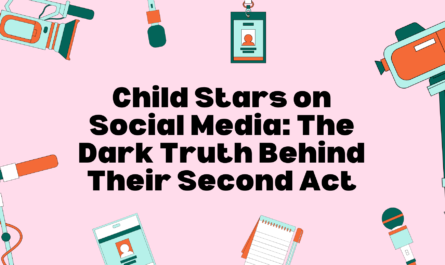Introduction: Why A-Listers Are Embracing Horror
When you think of horror, you might picture masked killers or low-budget thrills—not Oscar winners. But Hollywood is changing fast. From Margot Robbie producing Barbarian to Ryan Reynolds starring in an upcoming Blumhouse thriller, A-listers in horror are now a major trend.
So, what’s behind this spooky surge of star power?
In this article, we’ll explore:
-
5 surprising reasons A-listers are embracing horror films
-
How scary movies became prestige cinema
-
10 celebrities who shocked fans by going scary
-
Why horror might be saving Hollywood itself
1. Horror Films Offer Big Rewards with Little Risk
One of the biggest reasons A-listers are embracing horror? The numbers don’t lie.
-
Low Budgets, High Profits: Horror films usually cost between $5M and $20M—pocket change compared to $200M superhero epics.
-
Massive Returns: Smile (2022) made $217M on a $17M budget.
-
Streaming Favorites: Horror ranks as the most-watched genre on platforms like Prime Video and Max.
For celebrities, horror films offer:
-
Shorter shooting schedules (3-6 weeks)
-
Fewer CGI-heavy reshoots
-
Bigger backend deals
“After The Batman, Robert Pattinson did The Lighthouse to stay sane,” reports IndieWire.
2. Horror Has Gained Prestige—and Awards
Once dismissed as B-movie fare, horror has evolved into one of Hollywood’s most respected genres.
| Film | Awards | Legacy |
|---|---|---|
| Get Out (2017) | Academy Award for Best Original Screenplay | Made horror socially relevant |
| Hereditary (2018) | 97% Rotten Tomatoes | An acting showcase |
| The Witch (2015) | Sundance Winner | Elevated indie horror |
A-listers like Florence Pugh (Midsommar) and Lupita Nyong’o (Us) used horror to prove their dramatic range—earning critical acclaim along the way.
3. Creative Freedom Is a Huge Draw for Actors
A-listers in horror often enjoy more creative control than they would in franchise blockbusters.
-
No Superhero Fatigue: Horror roles often avoid formulaic scripts and heavy visual effects.
-
Gritty, R-Rated Roles: These parts allow stars to break from their squeaky-clean images.
-
Director-Driven: Talented auteurs like Ari Aster and Jordan Peele craft distinctive, vision-led projects.
Example: After Avengers, Elizabeth Olsen leaned into horror with Doctor Strange in the Multiverse of Madness and the gritty Love & Death series.
4. Streaming Services Love Horror—and So Do Young Audiences
Streaming has supercharged the rise of A-listers in horror.
-
Netflix’s Fear Street Trilogy: A-list appeal and Gen Z buzz
-
Shudder: A prestige horror hub
-
TikTok virality: Scenes from M3GAN and Talk to Me gained millions of views
Studios love that horror draws a younger audience. In fact, 60% of Pearl (2022) viewers were under 25.
5. Horror Reflects Modern Anxieties
Horror films allow stars and audiences alike to explore real-world fears in a safe environment.
Experts cite:
-
Post-Pandemic Stress: Fear of the unseen (It Follows, The Invisible Man)
-
Economic Anxiety: Class horror (Parasite, Us)
-
Tech Dread: Algorithmic nightmares (Black Mirror, Cam)
“Horror lets us scream about real fears—safely,” says trauma psychologist Dr. Claudia Black.
10 A-Listers Who Recently Turned to Horror
These celebrities embraced the dark side—and thrived:
| Celebrity | Horror Project | Why It Mattered |
|---|---|---|
| Margot Robbie | Barbarian (producer) | Showed her production chops |
| Nicole Kidman | The Others 2 | Queen of gothic horror returns |
| Ryan Reynolds | Mayday (Blumhouse) | Post-Deadpool reinvention |
| Anne Hathaway | Mother’s Instinct | Elegant Hitchcock-style thriller |
| Jessica Chastain | It: Chapter Two | Showcased monster-range acting |
| Harry Styles | Don’t Worry Darling | Pivoted from pop to psych-thriller |
| Lady Gaga | Joker 2 | Iconic camp horror |
| Chris Evans | Ghosted | Genre pivot post-Captain America |
| Florence Pugh | Midsommar, Don’t Worry Darling | Scream queen status cemented |
| Jake Gyllenhaal | The Guilty | Dark, claustrophobic thriller role |
The Future of Horror in Hollywood
Get ready—more A-listers in horror are coming.
-
Brad Pitt is starring in Wolf Man (2024)
-
Blake Lively will lead body horror film Seconds
-
Timothée Chalamet is producing a Nosferatu remake
Industry insiders predict that by 2026, nearly 40% of Oscar nominees will have starred in a horror film.
Final Thoughts: Should Every A-Lister Go Scary?
Horror isn’t just blood and screams anymore—it’s an artistic, financially smart, and emotionally intense genre that’s attracting Hollywood’s brightest.
Pros:
-
Career reinvention
-
Creative freedom
-
New audience reach
Cons:
-
Risk of being typecast
-
Not every star can sell scary
Still, it’s safe to say that A-listers in horror are here to stay.
Which A-lister would you never expect in a horror movie? Could Tom Hanks headline The Conjuring 4? Drop your picks in the comments!
if you liked reading this article must checkout: Celebrity Fan Encounters
also checkout: Click Here





One thought on “Why A-Listers Are Embracing Horror: Hollywood’s Surprising New Obsession”